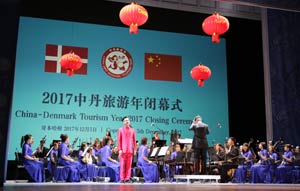Greater Bay Area new highlight in China's economy
BEIJING — Industrial experts and officials believe that the "Guangdong-Hong Kong-Macao Greater Bay Area" will provide strong support for an upgraded economy in China and drive economic development in southern China.
According to the annual government work report in 2017, China will draw up a plan for the development of a city cluster in the Guangdong-Hong Kong-Macao Greater Bay Area, give full play to the distinctive strengths of Hong Kong and Macao, and elevate their positions and roles in the country's economic development and opening up.
First addressed in the 13th Five-Year Plan (2016-2020), the idea of building a Greater Bay Area is not new. It is an updated version of previous regional development initiatives, such as the Pearl River Delta and the Pan-Pearl River Delta.
"Delta initiative" focuses on driving mainland development, while "bay area initiative" stresses external links and grabbing a commanding position in the global industry chain, said Sun Bushu, vice head of a city study institute in southern China.
The "bay area initiative" is based on natural geographical conditions and has taken a leading role in economic reform. It features an open economic structure, highly effective resource allocation and advanced international communication network.
World's top "bay area initiatives," such as Bay Area near San Francisco, feature developed service industries, major global financial centers and transportation junctions, said Guo Wanda, executive vice president with the China Development Institute.
The Greater Bay Area will include the Hong Kong Special Administrative Region, Macao Special Administrative Region, and nine cities in South China's Guangdong province, namely Guangzhou, Shenzhen, Zhuhai, Dongguan, Huizhou, Zhongshan, Foshan, Zhaoqing and Jiangmen.
"The Greater Bay Area covers less than one percent of the country's land area and its population accounts for less than five percent of the total. However, it created 13 percent of the nation's GDP in 2015," said Wu Sikang, an official with the Shenzhen municipal government.
As early as in 2014, GDP in the area reached $1.2 trillion, twice that in the Bay Area near San Francisco, and the value of imports and exports was about $1.5 trillion.
In the beginning of reform and opening up, the Pearl River Delta in southern China functioned as the "world's factory," with Hong Kong as its "storefront." In the 21st century, Guangdong, Hong Kong and Macao have deeply integrated and entered a new phase of coordinated development.
In 2013, GDP of the Greater Bay Area exceeded that of Indonesia and Saudi Arabia and was about the same level as the Republic of Korea and Spain. It has become important for supporting China's strategic development, said Lu Wenbin, a Shenzhen official.
The Greater Bay Area is also a cultural link connecting overseas Chinese, English and Portuguese and a bridge to countries along the 21st Century Maritime Silk Road, Lu added.
One country, two systems: Major advantage
The Greater Bay Area is operated with Chinese characteristics in accordance with the principle of "one country, two systems," under which the people of Hong Kong govern Hong Kong, the people of Macao govern Macao, and both regions enjoy a high degree of autonomy.
"The principle of 'one country, two systems' is a prominent trait and advantage of the Greater Bay Area," said Chen Guanghan, deputy dean with the Institute of Guangdong, Hong Kong and Macao Development Studies of the Sun Yat-sen University.
The diversified and complementary traits of different systems will boost cooperation in the bay area, Chen said.
Since reform and opening up in the 1970s, Hong Kong and Macao have been a channel for foreign investment to enter the Pearl River Delta, and now act as a platform for mainland enterprises to become more global, Chen added.
Mo Daoming, professor with the Institute of Public Policy of the South China University of Technology, said that the high degree of economic freedom and legal systems in line with international standards are also advantages of Hong Kong and Macao.
Lin Jiang, vice dean with the Institute of Free Trade Zones of Sun Yat-sen University, said that Guangdong, Hong Kong and Macao should stick to the principle of "one country, two systems," while making use of their own strengths.
"It is another challenge," Lin added.
Lin suggested establishing new innovative companies in the area to promote the development of the Greater Bay Area and a city cluster.
- HK should tap bay area for development, says ex-finance chief
- Bay area initiative to be a great boon to Hong Kong
- Final section of bridge to Hong Kong, Macao completed
- Department of Policies and Regulations (Department of International Cooperation and Office of Hong Kong, Macao and Taiwan Affairs)
- Bay Area still holds allure for Chinese buyers






















